Back in February at my first WLPC 2022 in Phoenix, I had the privilege to finally meet in person several iconic members of the Wireless community. One of those is JR, Technology Marketing Engineer, from Celona. He had found my original CBRS Pi blog post and asked me to come and find him during the conference.
Celona is a play on the name Barcelona like Cisco is a play on San Francisco. In the cellular world as I’ve found in my LTE Packet Captures, when a device is not allow on a specific tower or network, it is said to be “barred”. So in wanting to avoid getting “barred” from Celona’s network, I figure I had better be on their good side.
Joking aside, I didn’t attend Celona’s Deep Dive session, which they graciously share online for anyone to watch; since I already had my CPI and another session had caught my interest. Having watched the recordings, I wish I had attended. As I mentioned briefly in my previous post, I recommend everyone getting started with these network to go watch the quality content from Celona at WLPC 2020 and 2022. Celona is doing an amazing job with educating the market on why CBRS makes sense in certain use cases over Wifi.
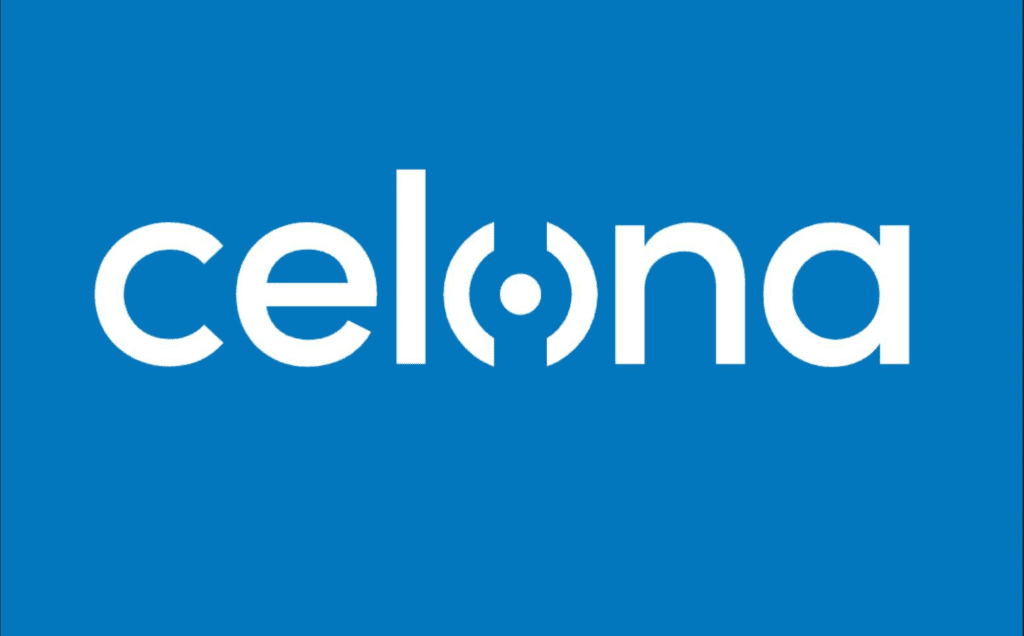
Something Different
Over the past few years, I have been following Celona closely as they are building something different in the CBRS Private Cellular space. The private cellular network that I’m building at my day job is more complex than Celona’s offering with additional licensed spectrum needs, our own IMSI block number, and other requirements, so I’m not a customer, but I wish the vendors that I’m working with had a lot of the trademarked features that set Celona apart. They also make me very interested to use Celona as a solution for some of my side business projects use cases that do not have a state government backing the project and building out the network.
Celona is the rookie playing ball in a big world of Goliaths while more than holding their own but in fact thriving. While most vendors, Nokia, Ericcson, etc., are making the transition over from the Public Carriers with their offerings to the market; Celona, with its startup mentality, has taken a stance of being a private cellular only focus company. With that focused objective comes some solutions that have really set Celona apart in a world full of big dogs. So many of my meetings with other vendors usually come with the disclaimer that “we’ve been in the public cellular industry for years and years and we will build your network for you.” They want to take over my project because they think they know what’s best for my use cases.
I fully believe the sentiment in the industry that not everyone should be building and designing the full stack of a private cellular network from scratch. There are way too many moving pieces, especially in the security realm, that can cause issues internally and interference for neighbors. There aren’t a lot of engineers who understand both enterprise networking and cellular technologies yet. Celona hits a good middle ground and makes Private Cellular accessible to more organizations and use cases.
The big boys believe they know what’s best for an enterprise. Celona, while still controlling the whole stack from the EPC to the RAN to the SIMs, their solution brings fresh air to a market controlled by the giants. Celona brings a solution that is more like a Wifi network with customization to an industry built to reduce customization for cost savings.
There is a common complaint put out by CTOs about private cellular, that it needs to be more enterprise centric like Wifi. Celona is hitting that sweet spot.
Hands On with Celona Orchestrator
The guys at Celona have shown interest in my little blog so they approached me to test out their gear*. At WLPC 2022, they supplied each attendee with a lab kit and allowed the attendees to setup their own Celona private network at the conference. JR is sending me one of the Lab Kits from WLPC to play with, and I’m beyond excited to get a taste of some of Celona’s secret sauce. As they say in the demo kit setup guide, Celona is taking a…

and placing it in a…

That’s the benefit of a small cell network, they can come in small packages. Although they have outdoor radios that look more like the big cell tower model just like the big boys.
*Full disclaimer, I am receiving the kit for demo purposes for a month with full authorization to write about my experiences and tests, in exchange for some Celona SWAG. For my day job, I am a state of Utah government employee with state purchasing laws limiting what I can receive from vendors. I write this blog in my free time outside of my day job, and I’m not a Celona client. Because of other agreements, I don’t have any plans to be a Celona client under my current role as a government employee. All views herein are my own and do not represent my employer, constituents, or other organizations within the state of Utah government.

So easy..
My first impression with Celona Orchestrator is that it is super simple to setup. They are the Apple of building a private cellular network; it just works. In a lot of use cases, organizations just want something simple to setup without all the deep configuration of bells and whistles. That is the market Celona is set to reach. If you have deep LTE/5G technical knowledge in house and want to configure deep settings like your own keys and SIMs, then Celona might not be for your organization. On the other hand, if you are like a lot of organizations and do not have tons of resources to put towards a private cellular network, but have use cases that could benefit, Celona makes a great case to be your vendor of choice.
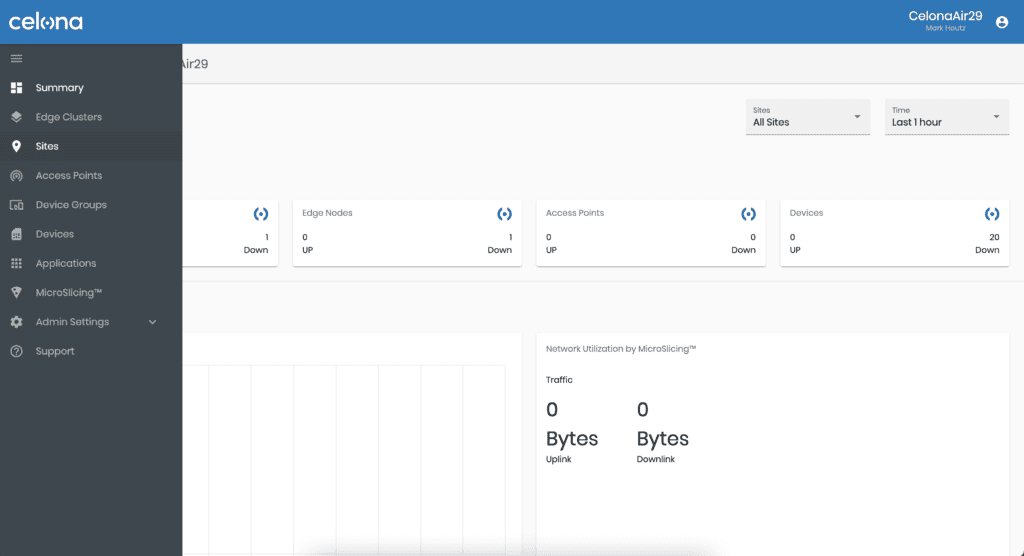
Having worked with other vendors, it almost blows my mind that this is the whole package. EPC (HSS, MME, S-GW, and P-GW), RAN configuration, SIMs Management, QoS, MEC.. all in one easy to navigate package.
Celona takes the LTE/5G lingo and throws it out the window for terminology that is more familiar to an enterprise setting. Access Points are what the LTE world calls eNodeB, gNodeB in 5G, or CBSD in CBRS lingo. Devices are what the cellular world calls User Endpoints (UEs) or Customer Premises Equipment (CPE).
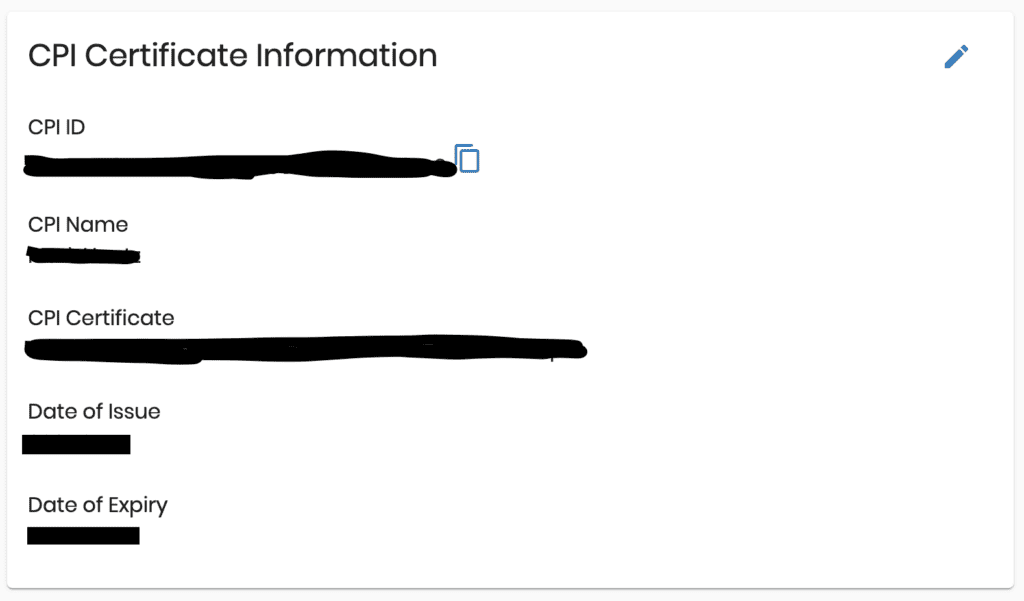
Setting my CPI Credentials under my user account was just as simple as other systems I’ve used. Enter your name, CPI ID, password, and certificate file and you’re good to go. A CPI Certification is required for at least one person involved with the project. The CPI ties the installation data to a user to verify that a radio is physically installed at the location recorded in the SAS database. This is done to avoid interfering with incumbents or PAL license holders. A radio will not receive a grant from the SAS and turn on the radios to broadcast unless someone certifies the radio.
The course material in the CPI trainings are not that well written, but the exam isn’t that difficult. Supplement your learning with the content from Celona’s WLPC deep dives on Youtube, and you shouldn’t have any issues. My friend, CWNE 333, Ian Stout, recently pass the CPI exam in about 15 minutes and when I took it a year and half ago, my time table was similar. Anyone with some understanding of how wireless technologies work shouldn’t have too difficult of a challenge passing the exam. In my view, it’s more written for the people who are climbing the tower than the seasoned Wifi engineer, but both will gain the knowledge they need to certify and install radios following the FCC regulations for CBRS.
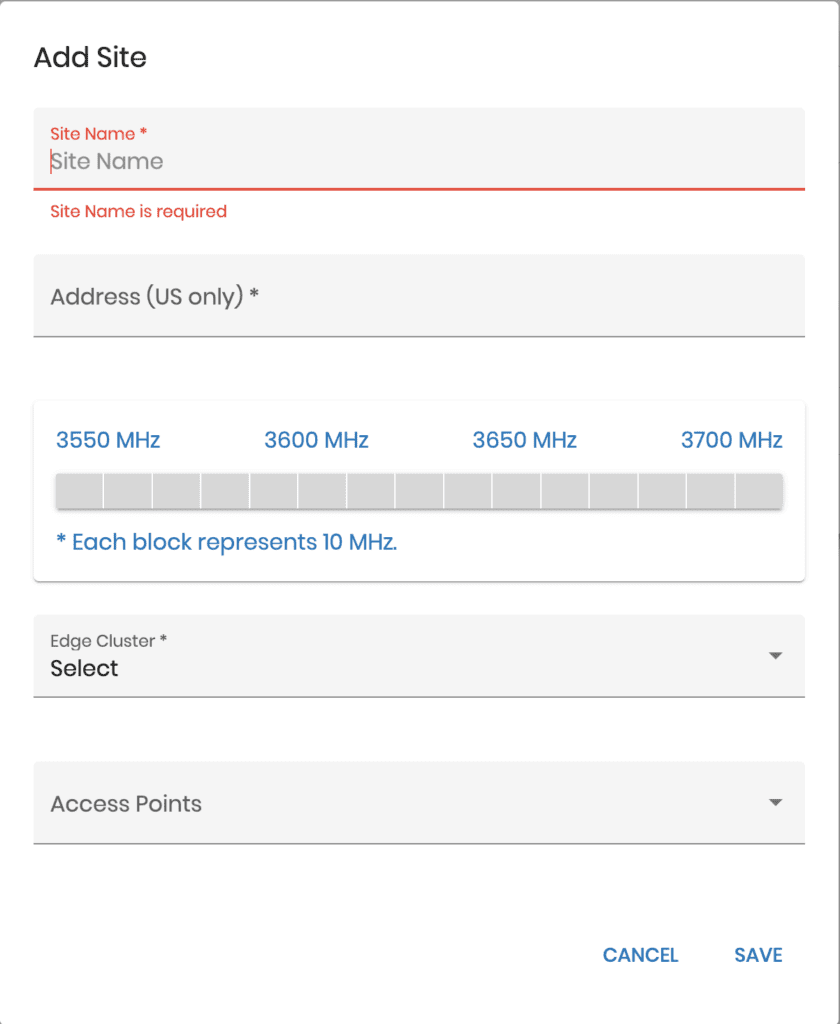
The rest of the configuration, so I can hit the ground running when the equipment arrives, was super simple. Beyond setting my CPI, I just had to setup a site by giving the site a name, putting an address from inside the United States, making sure there is available CBRS spectrum at the address, setting the Edge Cluster, adding the Access Point, and clicking save. Celona added the Access Point to my account and setup the Edge Cluster for me.

Looking at the setup of a new Edge Cluster, you basically select a SAS Account. They set me up to a Demo Celona SAS Account, who I’m guessing is using Google. It looks like I could also use Federated Wireless which they call their Production account. You can use any of the FCC approved SAS providers, such as AmDocs, Google, Federated Wireless, or Sony. Commscope previously was an authorized SAS provider but has made the business decision to exist the market. You then assign the Edge Cluster with different Edge Nodes and that looks like all there is to setting up the Edge Cluster.
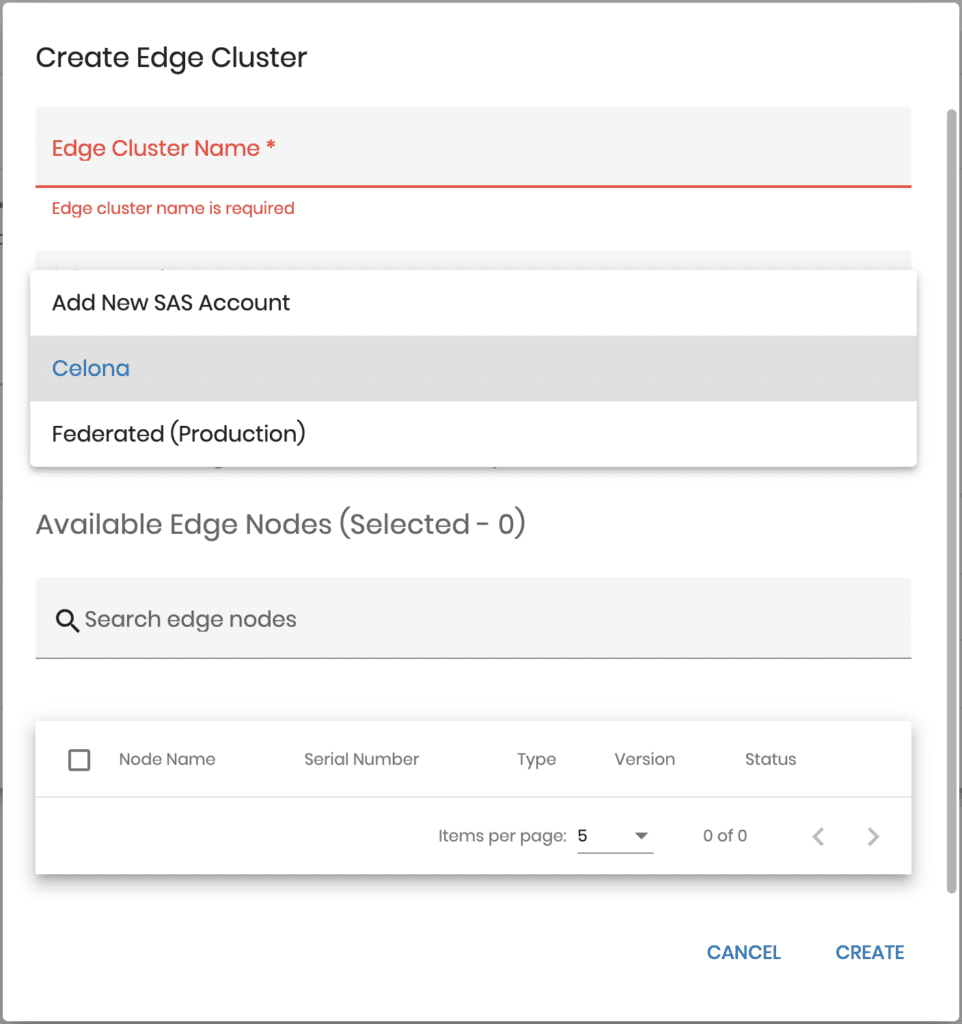
Celona Edge
Edge Nodes, from Celona’s Documentation, are pre-provisioned by Celona support. These Edge Nodes are where Celona really starts to shine and where LTE and 5G can really start to benefit an enterprise. Edge Nodes require a physical appliance on premise. It looks like the demo kit just uses an Intel NUC.
The basic industry concepts Celona is building their trademarked Edge Nodes on is a technology called Media-Access Edge Computing (MEC). MEC is kind of a Cellular version of setting up CAPWAP for Wifi networks to tunnel traffic to the Wifi Controller. Celona has taken the MEC concept and expanded it to new exciting levels that no one else is doing. This is where I get jealous of Celona’s technology compared to other vendors.
MEC takes the EPC/5G Core and allows an organization to move pieces of the Core to other servers or locations, specifically the S-GW and P-GW. The S-GW and P-GW handle the routing of data traffic from UE and CPE devices, the Data and Voice PDSCH traffic; while, the other components handle the control plane traffic, like PBCH Control Traffic. Distributing these two functions away from the main EPC Core, you can integrate Private Cellular into a network in new and interesting ways.
Celona is using this technology to bring the concept of VLANs and Routing to the UE and CPE devices. Cellular technology, unlike Wifi, doesn’t use Layer 2 MAC Addressing or VLANs. Cellular is a Layer 3 technology. Often CPE devices and Hotspots NAT the inside devices so there is little to no visibility of those inside devices.
Celona’s technology with Celona Edge provides that visibility and control. You can assign SIMs to a device then assure that the device is connected to a specific VLAN inside of an enterprise network. Their newest announcements include enterprise routing protocols like RIP and OSPF to advertise routes to those CPE devices removing the requirement of using NAT. These specific issues have been holding enterprises back from adopting private cellular technology on a large scale. Celona is making private cellular function just like Wifi with the technologies used in Celona Edge.
Microslicing
The final piece that sets Celona apart is how they can schedule traffic and ensure arrival of that scheduled traffic with their trademarked Microslicing technology. In 5G is a new technology called Slicing. On Public Cellular networks, the big vendors are starting to offer network slicing to enterprises. Slicing is a form of segmentation over the air interface. Celona is bringing that concept to the private cellular world in their LTE and upcoming 5G solutions.
Cellular technologies are founded on the basic application of transferring voice traffic wirelessly. Data was added later on and while voice has been transitioning to just another data application it still needs the assurance of arrival on time as scheduled. In private cellular, that’s where Celona’s Microslicing comes into play.
Most enterprise networks utilize QoS to ensure arrival of VOIP data to phone systems or other applications on the wired side. Lots of enterprises have attempted to utilize QoS on the Wifi side through Wifi VOIP phones and Wifi Calling with varying levels of success. Wifi is not a technology that provides the greatest assurances that traffic will arrive on time. Microslicing brings QoS to private cellular wireless technologies over Wifi because of how LTE and 5G are built. Celona’s QoS Classes are can be tied to specific Applications, ensuring those specific application have some guarantees.
All LTE and 5G traffic is scheduled and in the CBRS bands the scheduling is according to TDD patterns. As I talked about in a previous blog post, TDD Configurations, or Subframe Assignment patterns 1 or 2 as allowed in CBRS, bring assurances for when a device is going to be able to transmit and receive data. All Downlink and Uplink traffic follow a timed pattern as the graph below shows. You want this to match with any network on the same channels within range of your network. TDD Configuration is going to be one of the biggest things that will hurt CBRS rollouts moving forward if set incorrectly.
Celona, with their Microslicing, takes the QoS idea to the next level and allows scheduling that traffic according to custom QoS Classes: Best Effort, Internet & Email, Interactive Multimedia, Streaming Video, and Highest Priority Signaling down to the application layers. The other option Celona provides is to ensure a guaranteed bit rate such as 1Mbps for a device. The guaranteed bit rate is very useful for recording video with security cameras or other applications that would struggle on Wifi.

As long as the channel is not saturated with too many devices or that the TDD Configuration is interfering with neighbor networks, Celona can guarantee these SLAs are met. Try doing this in Wifi as there are no guarantees because of how the technology is designed.
Final Thoughts
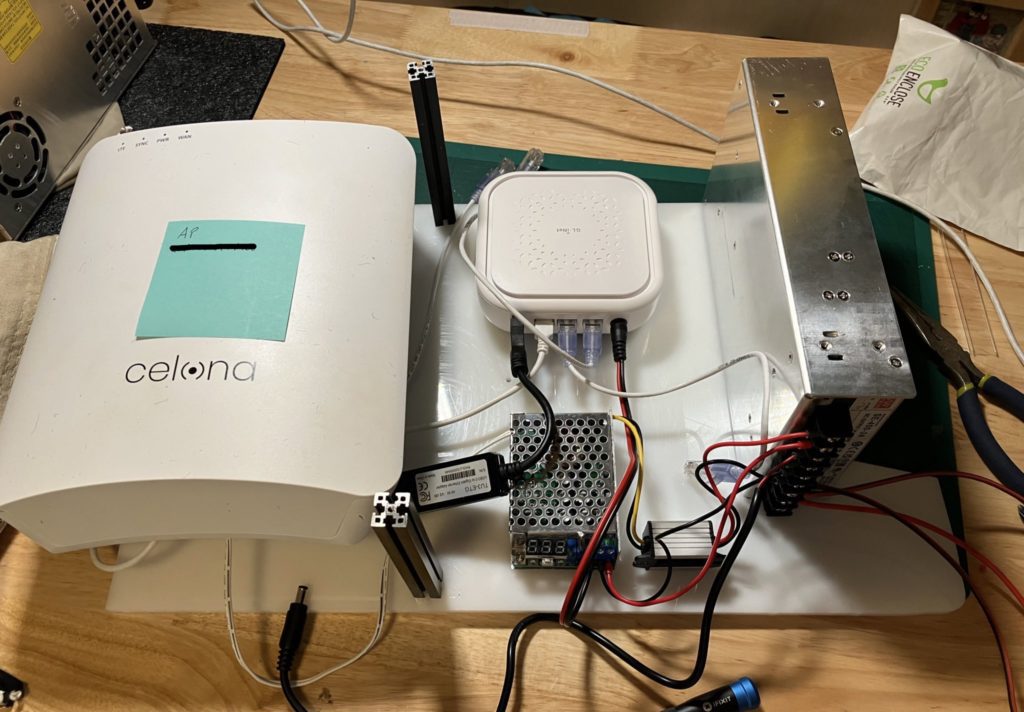
The above is a shot of the kit before JR shipped it off to me. Celona’s user guide for the kit and what is included can be found here: https://docs.celona.io/en/articles/5815785-celona-air-mobile-demo-kit-user-guide.
I’m excited to get my hands on this Celona’s gear to play with and test out. I’m not sure if I’ll be able to test all of their secret sauce because of the Celona Edge might be locked down for the kit but we will see when the Kit arrives.
Celona is building a system for the every day enterprise. Technology that is easy to use, easy to maintain, and that bypasses the shortcomings of Wifi. I have several use cases I want to test and see their offerings in action. I’ll be sure to write some blog posts, including an idea for one use case that I believe is going to turn a few heads.
For more in depth understanding of how these specific technologies work visit Celona’s documentation. https://docs.celona.io/en/articles/4655451-celona-products-explained

